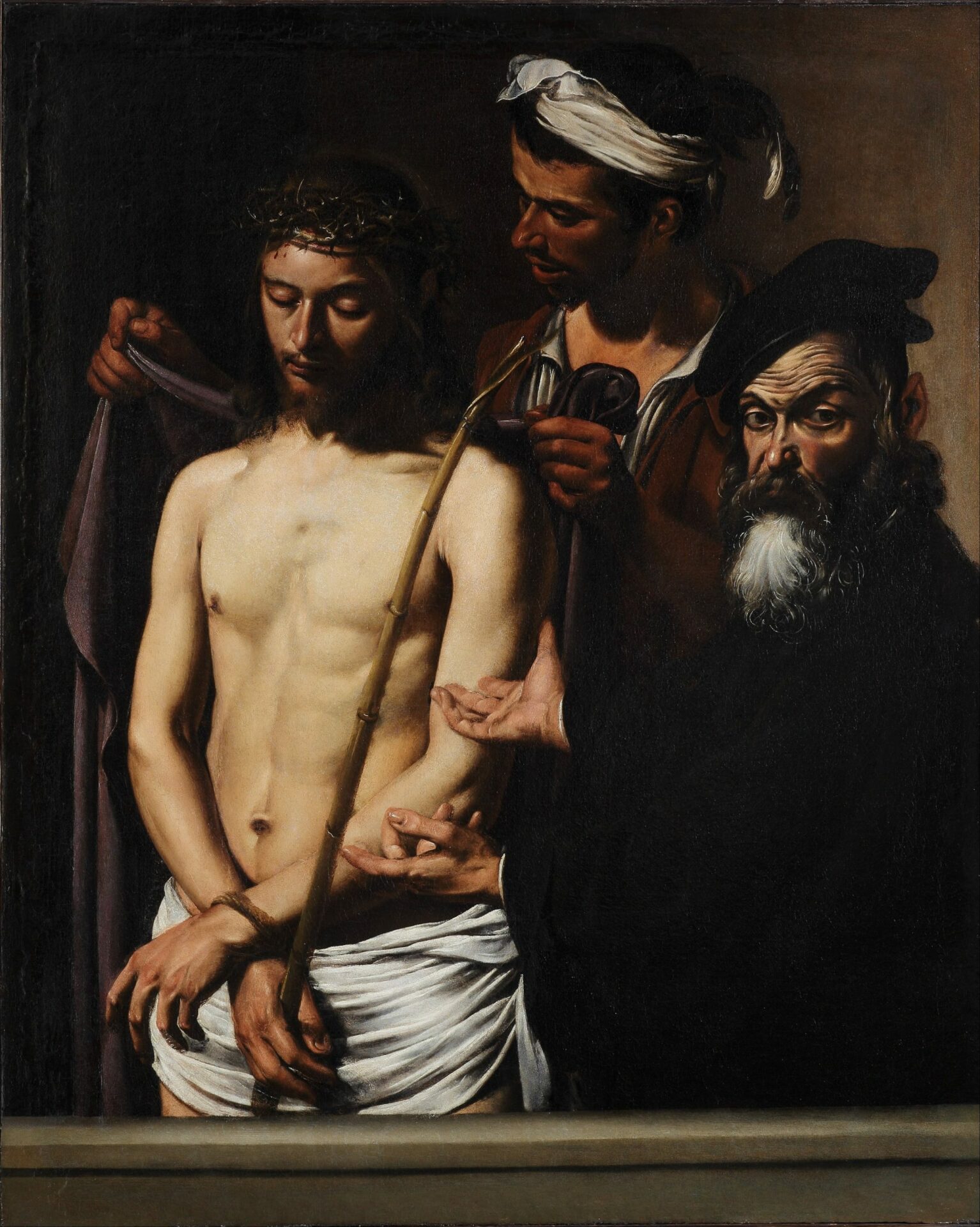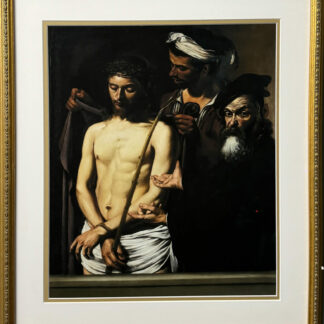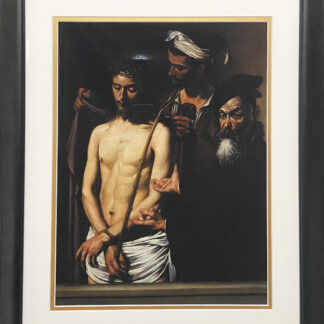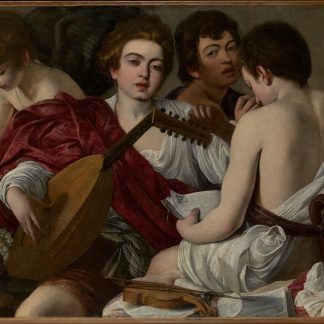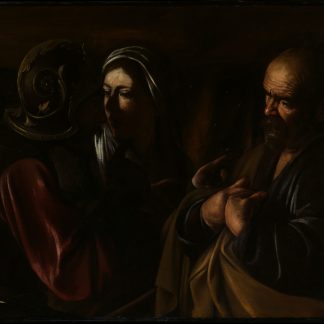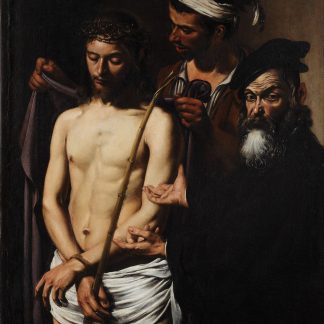Description
According to Giambatista Cardi, nephew of the Florentine artist Cigoli, Cardinal Massimo Massimi commissioned paintings on the theme of Ecce Homo from three artists, Cigoli, Caravaggio, and Domenico Passignano, without informing the artists of the multiple commissions. Cardi claimed the cardinal preferred Cigoli’s version. The Passignano painting has never resurfaced.
The scene is taken from the Gospel of John, 19:5. Pontius Pilate displays Christ to the crowd with the words, “Ecce homo!” (“Behold the man”). Caravaggio’s version of the scene combined Pilate’s display with the earlier moment of Christ, already crowned with thorns, mockingly robed like a king by his tormentors. Massimi already possessed a Crowning with Thorns by Caravaggio (thought to be the Crowning with Thorns in Prato]), and Ecce Homo may have been intended as a companion piece. Stylistically, the painting displays characteristics of Caravaggio’s mature Roman-period style. The forms are visible close-up and modelled by dramatic light, the absence of depth or background, and the psychological realism of, the torturer, who seems to mix sadism with pity. Pilate, in keeping with tradition, is shown as a rather neutral and perhaps almost sympathetic figure. He is also depicted wearing anachronistic clothing which was more contemporary to Caravaggio’s time.


